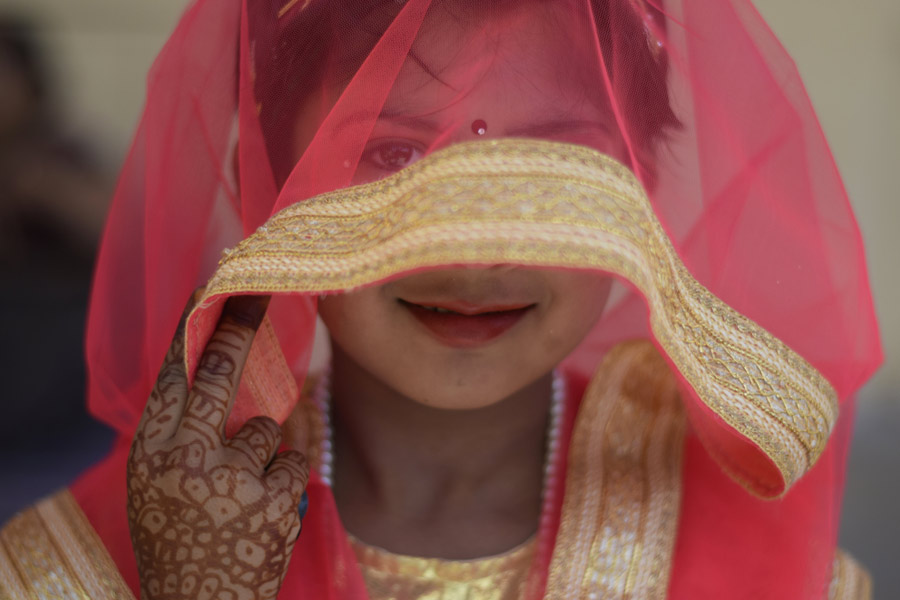One in five girls and one in six boys in India still marry below the legal age despite the penalties for child marriage, the first comprehensive study of child marriage patterns in the country over three decades has revealed.
The study, based on the Union health ministry’s national family health surveys, has found that the prevalence of child marriage among girls declined from about 49 per cent in 1993 to approximately 22 per cent in 2021.
Among boys, the proportion of those marrying before the legal age of 21 in 2021 was 15.49 per cent. However, the prevalence of child marriage in boys — that is, marriage before 18, which is the focus of the study — was about 2 per cent in 2021, down from 7 per cent in 1993.
These prevalence rates, when extrapolated to the projected population, imply that in the year 2021, over 1.3 crore girls and 14 lakh boys in India married before they had turned 18, the study says.
The findings, published on Saturday in the journal Lancet Global Health, come at a time when a parliamentary panel is examining a bill to raise the age of marriage for women to 21, on a par with men.
“There may be good reason to increase the legal age for girls, but the proposal to raise it to 21 should be considered alongside the current high levels of non-compliance even at 18,” S.V. Subramanian, professor of population health and geography at Harvard University who led the study, told The Telegraph.
“There needs to be a focus on how to ensure compliance, with policies and awareness campaigns on prevention that are sensitive and context-specific.”
Many activists have argued that if the cut-off age is raised to 21 for women, some families that might have been ready to wait till 18 may start marrying their daughters off even earlier, thinking it not worth their while to wait till adulthood any longer.
The Prohibition of Child Marriage Act, passed in 2006, set the legal age of marriage for men at 21 years and for women at 18 years. The punishment for violations includes up to two years’ imprisonment.
Despite the nationwide decline in the prevalence of child marriage, the researchers have detected a “stagnation” after a large drop between 2006 and 2016.
Their analysis has identified Bengal, Bihar, Gujarat, Madhya Pradesh, Rajasthan and Uttar Pradesh as states with a high prevalence of child marriage in girls or boys.
Bihar accounted for 16 per cent of the 1.3 crore girls in 2021 who married below the age of 18, followed by Bengal (15 per cent), Uttar Pradesh (12 per cent), and Maharashtra (8 per cent).
Among the 14 lakh boys who married below the age of 18 in 2021, Gujarat accounted for 29 per cent, followed by Bihar (16 per cent), Bengal (12 per cent) and Uttar Pradesh (8 per cent).
More research is needed to identify the factors that might explain the state-level and district-level variations in, and drivers of, child marriage, Subramanian and his colleagues said.
The study’s co-authors are Shamika Ravi, a member of the Prime Minister’s Economic Advisory Council, and public health researchers Jewel Gausman, Rockli Kim and Akhil Kumar.










